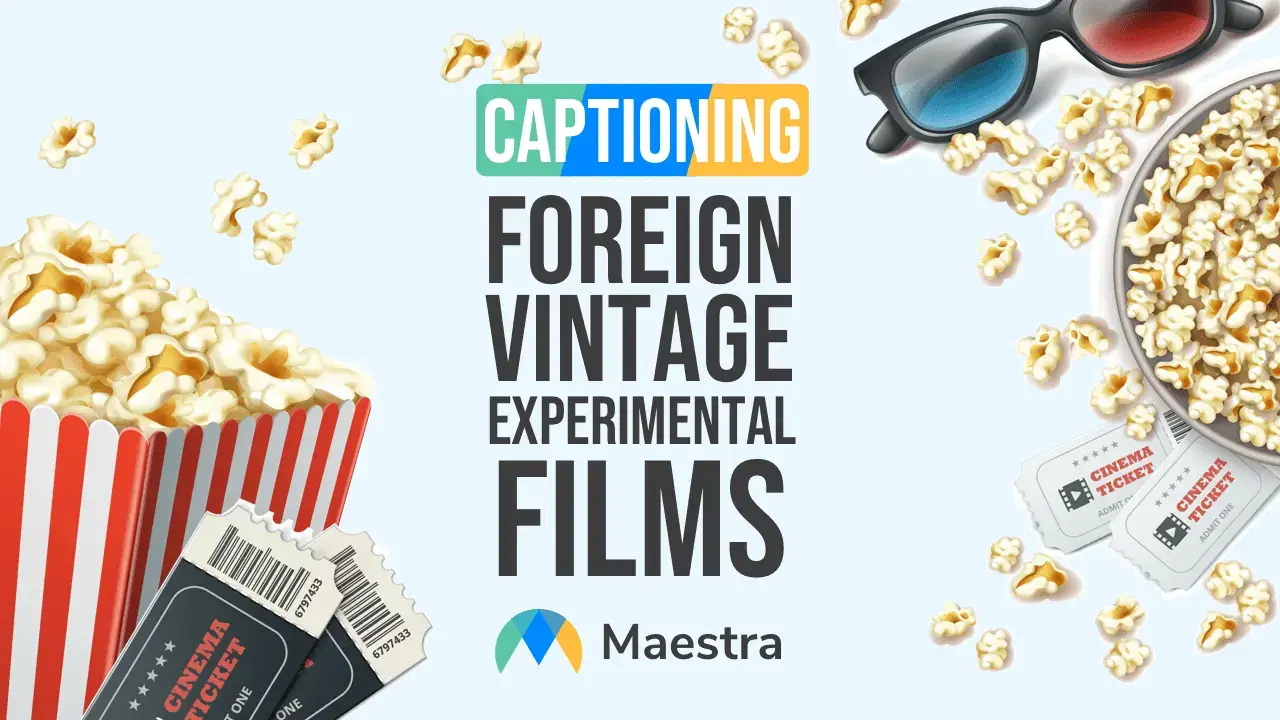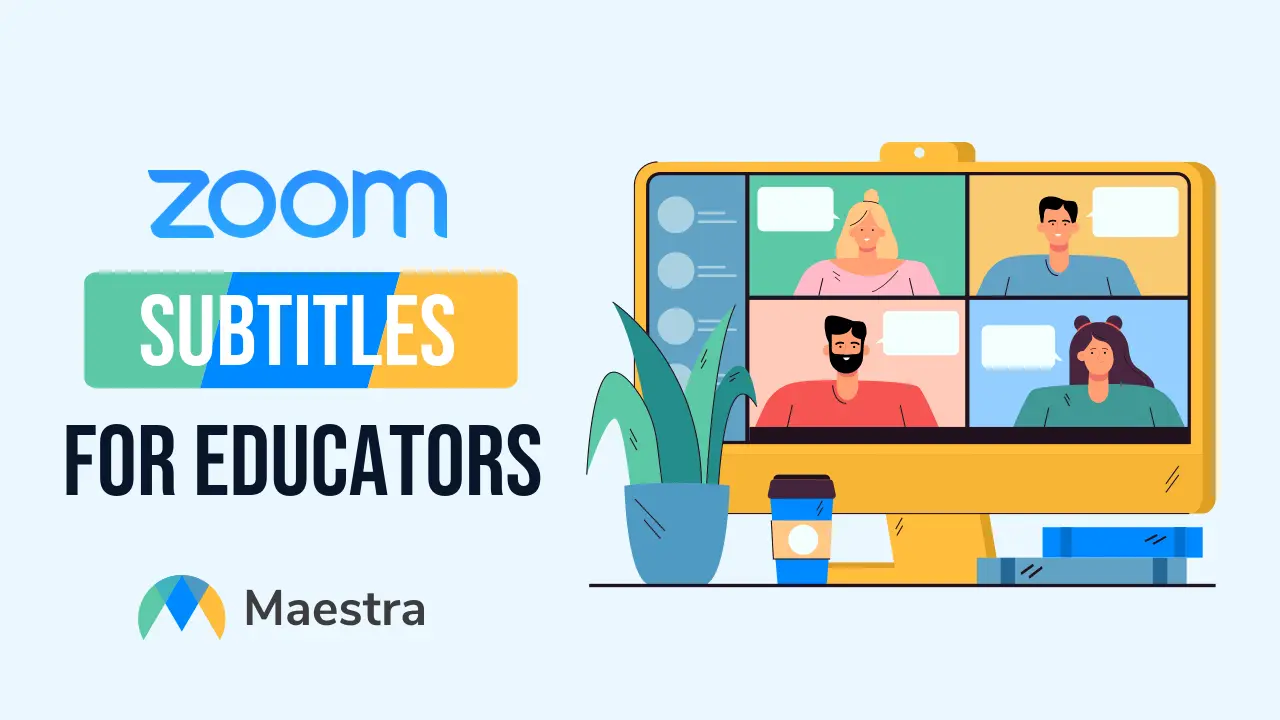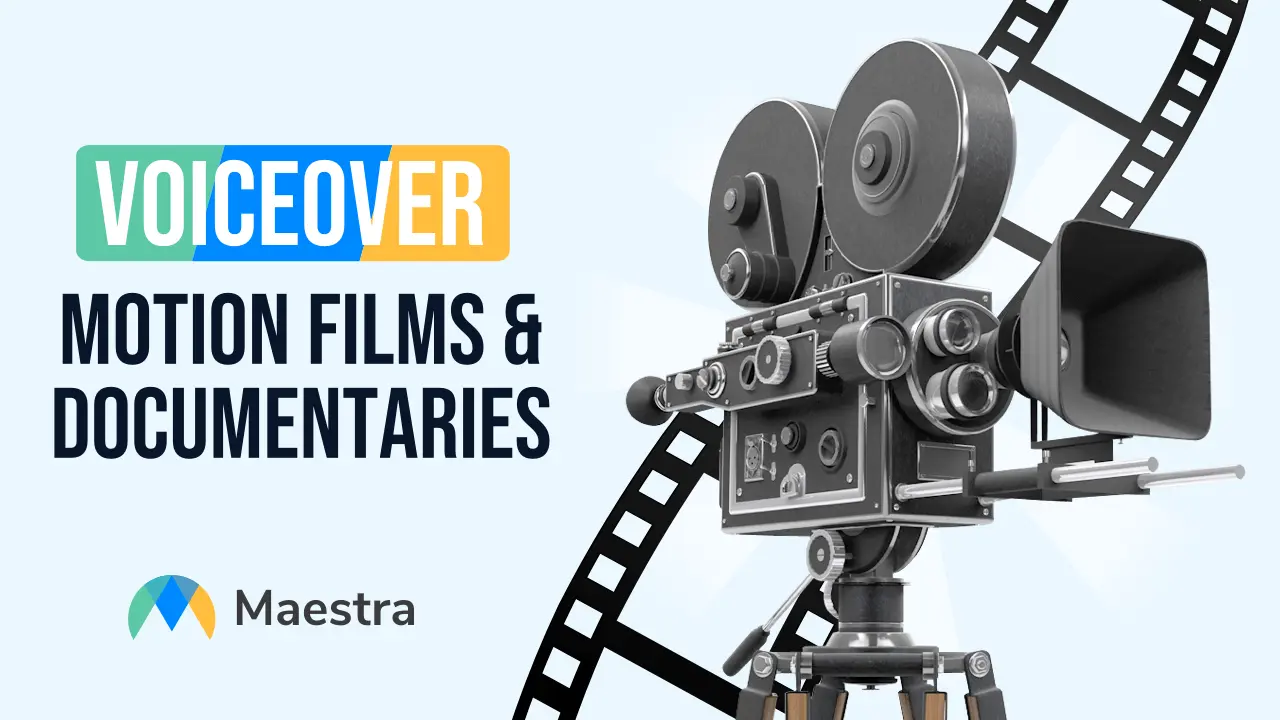How Foreign, Vintage, and Experimental Films Can Benefit From Captioning

There are many ways to tell a story, and cinema has been one of the most popular forms of doing so for well over a century. Filmmaking is now a $136-billion industry worldwide, with the majority of pictures being produced in the U.S. and India.
During its long development, different styles and techniques of cinematic storytelling have come and gone. Technology, world events, economic factors, and more have all contributed to a medium which is constantly changing and always exploring new ways of creating a narrative.
Captioning, as a storytelling device, has been employed in cinema since its origins. Today it is most commonly encountered when an actor or actress is speaking a different language, when an audience has special accessibility needs, or when you’re at home watching something in a noisy environment.
There are, however, many more applications for captioning with regard to films. Certain types of films especially favored by enthusiasts, historians, collectors, and others can greatly benefit from captioning. Foreign films, vintage films, and experimental films are all important facets of cinema history, and including subtitles and captioning is both a boon for viewers and a potential source of revenue for movie studios. Best of all, adding captioning to films has never been easier with Maestra’s state-of-the-art software suite.
Common Uses of Captioning in Films
Captioning is already used in cinema in a variety of ways. Most notably, it is used to provide greater accessibility, as an expository tool, and as a convenience in the home market.
Captioning allows film studios to make their content accessible to those who are deaf or hard of hearing. More than 1 in 20 people in the United States suffers from some sort of hearing disability. Offering captioned edits of films allows everyone to have access to them and can boost sales for the companies who released them.
Some films can also use captioning as a means of exposition. In order to avoid awkward explanations by actors and to shorten the run-times of films, some movies will have intro sequences which use captioning to describe details about locations, time periods, and backstories.
When movies are released to the home market, either as physical media or through streaming services, a closed captioning option is almost always included. This enables viewers to toggle captions on and off so that in noisy environments or quiet places they are free to watch and enjoy without disturbing or being disturbed by anyone. Sometimes it’s also just nice to turn on captioning to make sure you don’t miss anything.
These are a few of the more common uses for captioning in films today. When we start examining more unusual and obscure kinds of cinema, however, the number of possible applications multiplies.
Foreign Films
Despite the United States’ prominence in the film market, there is a wide variety of well-known foreign films with large followings both domestically and abroad. French New Wave, Japanese Golden Age, and Bollywood are just a few of the more well-known movements and eras which have been met with critical acclaim and greatly influenced modern filmmaking.
Captioning, in the form of subtitles, can make these films intelligible to viewers who do not speak the language they were originally recorded in. Making them more widely available is not only a way of preserving their impact, but also vastly increasing their viewership and fan followings. This can mean greatly increased revenue for the companies which produced them, even if they are several decades old. This could also inspire growth in cinematic industries around the world, resulting in greater creativity and output and more opportunities for local actors.
As well, offering these films in a variety of different languages can be a great tool for becoming fluent in other languages. Watching films with captions either in your target language or in your own language can test comprehension, enlarge vocabulary, and help with pronunciation.
Vintage Films
Another category which can benefit from captioning is very old films. There are thousands of old movies out there which form an integral part of cinematic history but which are unavailable or unwatchable today. Captioning can help revive and preserve these works for contemporary enthusiasts and future generations.
The very earliest films did not contain sound. They were simply footage played on a screen to live music. In order to make what was going on on screen intelligible to the audience, frames of text were spliced in containing written narration or dialogue. These types of films can be difficult to watch for modern viewers used to having video and audio combined. As well, many of these films are in poor condition—portions of them missing or so deteriorated by time that they are unplayable. Captioning, applied carefully and integrated with the footage, could bring these films back to life, making it both possible and enjoyable to watch them and saving them from being lost to time.
Audio began being added to films in the late 1920s. However, recording equipment and the techniques used to attach recorded audio to video film footage was still rudimentary. As a result, many films from the first half of the 20th century have damaged or destroyed sound. Captioning can be of especial use here, either helping to clarify muffled or distorted dialogue or replacing the audio entirely. Audio restoration can only do so much, and captioning is a cost-friendly and simple way to make many of these early films live again.
Experimental Films
Finally, captioning can go beyond its role in helping movies stay watchable and comprehensible and become an artistic tool in and of itself.
For as long as there have been movies, there have been directors who desire to push the boundaries and break from the norms of their times. By using unusual scripts, filming techniques, sets, and more, they managed to take cinema in new directions. This tradition is still being carried on today, and captioning can be a part of this continuing experimentalism.
Captioning can be used in many unconventional ways. It can reveal hidden inner emotions taking place in characters while they go about their days. It can disrupt the storyline by telling an alternate or contradictory story at the same time as the action on screen. It can rearrange the linear path of time by continuing an earlier storyline while another scene is playing. It can disorient the viewer by rewriting the conversations on screen or suddenly having the actors start speaking another language.
The experimental applications of captioning are nearly limitless, and its creative utility for the cinematic industry is largely untapped.
Captioning With Maestra
With all the time, resources, and energy it takes to produce a feature-length film, adding captions to one is surprisingly easy with Maestra.
Maestra is the all-in-one tool for content creators of all kinds, from filmmakers to educators and business owners. Captioning your video begins with uploading it to Maestra’s website and clicking on the subtitle and captioning tool. Maestra will then analyze your film and generate a transcript of the audio. This will then be applied to your file, giving you a fully captioned version of your video. Maestra’s speech recognition software is an industry leader, but if you need to tweak or fine tune anything, Maestra’s simple editing tool makes it quick and easy. If you’re dealing with a movie with damaged audio or an experimental film where the captions don’t match up to extant audio, you are also free to add in your own captions and position them. Once you’ve got your film just the way you want it, you can either download the new file or export it right from Maestra’s site.
________________________
In addition to captioning, Maestra also offers solutions for transcription, dubbing and voiceover, and virtual collaboration. If you work with video, Maestra’s software suite is an indispensable tool. To learn more, visit our website and sign up for a free trial, where you’ll have access to all these programs and more.



